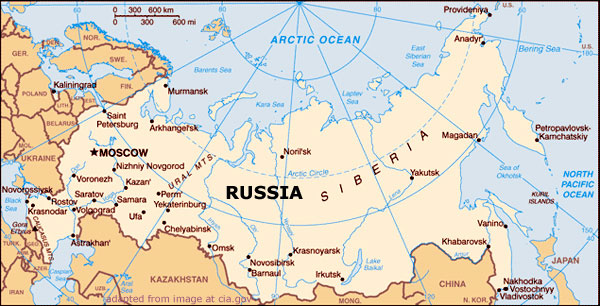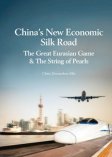China’s Siberian, Russian Far East Belt and Road Starts to Take Shape
Op/Ed by Chris Devonshire-Ellis

China’s foray into developing the Russian Provinces of Siberia and the Russian Far East are taking shape with a number of recent investment developments and projects being launched. The region, which has a long border with China, is strategically important for the northern Chinese Provinces of Heilogjiang and Jilin, as they offer Pacific Ocean access to these otherwise landlocked areas. Siberia and the Russian Far East are also home to massive energy and other high value reserves.
Beijing and Moscow have already established an RMB Investment Fund to support investments into the region, which has attracted Chinese companies such as China Energy Engineering Corporation, who are interested in the construction and upgrading of power plants in the region as part of the program designed by Russia’s Energy Ministry, which provides for the modernization of about 40 GW of power capacity until 2035.
China Railways (CRC) has also identified the Russian Far East as a “high priority market.” CRC have also tied this to the region’s international transport corridors Primorye-1 and Primorye-2, which connect the Chinese provinces of Heilongjiang and Jilin with the Far Eastern Russian region of Primorye, and Pacific Ocean access at Vladivostok.
However, there are other plans for the region aside from building infrastructure to help Chinese companies export goods. Both China and India are investing billions into Siberia’s Klyuchevskoye Gold Mines, while Indian, Chinese, and Japanese gem dealers have also been establishing processing and trade facilities in the Eurasian Diamond Exchange, recently opened in Vladivostok. Russia is now the world’s largest supplier of diamonds, while domestic consumer demand for high value jewelry in massively increasing in China and India as their huge middle class populations become more wealthy. Beijing too, is interested, along with Moscow, of building up their gold reserves, principally to embarrass the United States at a later stage and suggest that the RMB and Ruble are supported by real assets. There have been predictions of a US Dollar devaluation taking place should this happen, expected around 2030.
Both Siberia and Russia’s Far East contain huge amounts of oil and gas deposits. This is leading China and Russia to develop Russia’s Arctic Sea Ports, and start to develop the Northern Sea Passage as a viable route for oil and gas goods from Russia’s Far North to China and beyond. In fact, the first commercial shipment of LNG gas traveled from the Arctic’s Yamal Peninsula to India earlier this year, while Maersk sent its first commercial container ship from Vladivostok to Europe just a couple of months ago.
Siberian Russia and Northern China are also being better connected as other infrastructure developments are completed. The Nizhneleninskoye-Tongjiang Bridge, which crosses the Amur River, is also supporting the Primorye-1 transport corridor, and will increase trade and traffic.
Vladivostok, the principal regional city, is experiencing something of a boom time. Just three hours flight from Shanghai, it has a well developed free trade zone and port, with part of the area designated as a tax free haven. This marries business development with tourism, and includes a major casino operation, attracting gamblers from across North-East Asia. Russia also provides an 8 day electronic visa-on-arrival service to the city. International standard hotels and gourmet restaurants and bars are already springing up to take advantage of this new clientele. While northern Asian cities such as Beijing and Seoul have long enjoyed a winter tourism season, it is Vladivostok that will soon be joining them as a destination for the entrepreneurs, adventurers, investors and sanctions-busters that this enigmatic region is now starting to attract.
About Us
Silk Road Briefing is produced by Dezan Shira & Associates. Chris Devonshire-Ellis is the practice Chairman. The firm has 26 years of China operations with offices throughout China, Asia and Europe. Please refer to our Belt & Road desk or visit our website at www.dezshira.com for further information.
 Related Reading:
Related Reading:
![]() Russia’s Increasing Gold Reserves Helping its Belt Road Development
Russia’s Increasing Gold Reserves Helping its Belt Road Development
![]() Russia Considers Bridge/Tunnel Connection To Sakhalin Island
Russia Considers Bridge/Tunnel Connection To Sakhalin Island
China’s New Economic Silk Road
This unique and currently only available study into the proposed Silk Road Economic Belt examines the institutional, financial and infrastructure projects that are currently underway and in the planning stage across the entire region. Covering over 60 countries, this book explores the regional reforms, potential problems, opportunities and longer term impact that the Silk Road will have upon Asia, Africa, the Middle East, Europe and the United States.






